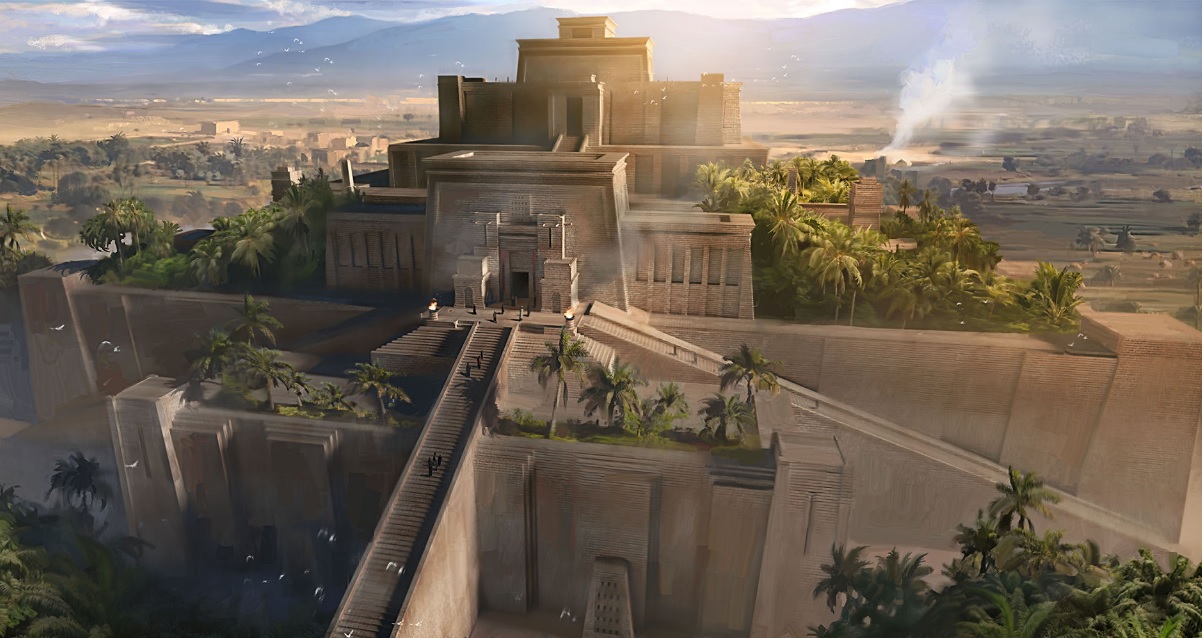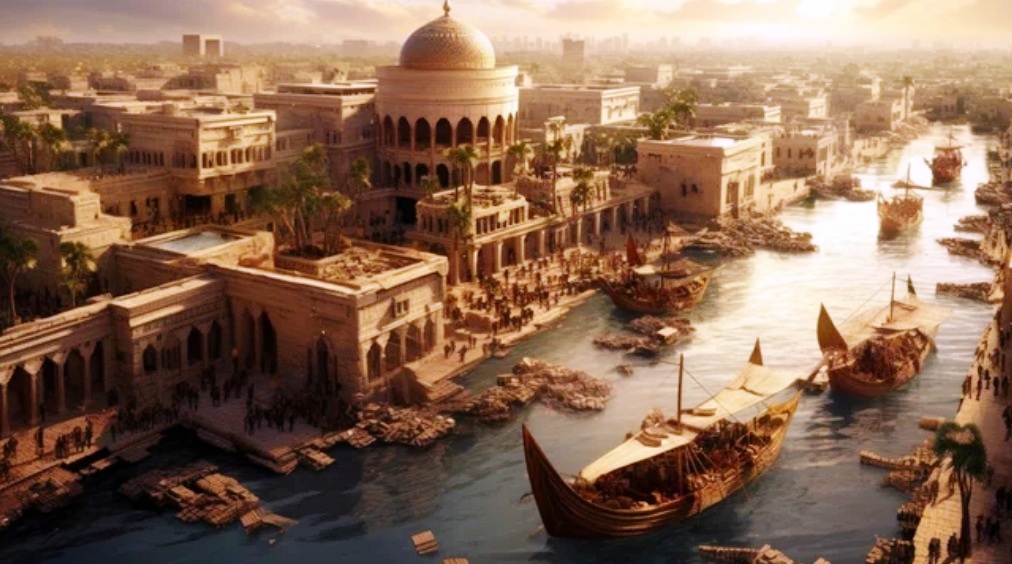Difference between revisions of "Mesopotamian History"
Tao alexis (talk | contribs) (→Akkad) |
Tao alexis (talk | contribs) |
||
| Line 16: | Line 16: | ||
== Akkadian Empire == | == Akkadian Empire == | ||
| + | The '''Akkadian Empire''', centered around the city-state of Akkad, was founded by '''Sargon''' around 2334 <small>BC</small>. It lasted until 2154 <small>BC</small>. Taking advantage of the power struggles between other city-states, fragmenting Mesopotamia, Sargon conducted a series of successful military campaigns that established Akkad's hegemony. With successes, he was able to expand his army into a formidable fighting force, as it was composed of Akkadian soldiers and those of conquered cities. The empire marked an important milestone, demonstrating that large-scale unification was possible within Mesopotamia. | ||
| + | |||
| + | Though not of royal blood, Sargon also proved a brilliant administrator; he established a centralised bureaucracy that helped control his conquests, while allowing for the allocation and resources and communication throughout the empire. The diffusion of ideas, technologies and goods contributed to a more integrated and interconnected empire. The establishment of one code of writing, the bringing together of diverse religious practices and the pacification of trade networks made Akkad rich and benefited all Mesopotamia. | ||
| + | |||
| + | Following Sargon's death, however, the empire began to come apart. The rulers who followed Sargon were weak and incapable; disputes in the succession meant many short-lived rulers, while power struggles among the elites destabilised the power structure. In truth, the empire was overextended; maintaining control over such a vast territory strained the state's resources. Akkad found itself pressed on every side, particularly the kingdom of Elam to the east. Coupled with internal unrest, any disruption in the food supply — which did happen when droughts occurred — built up a strong sentiment against the empire. The southern cities revolted, and though the rebellion was put down, such events foretold the empire's collapse. | ||
| + | |||
| + | == New Sumerian Period == | ||
| + | This brief period between 2112 and 2004 <small>BC</small> saw the return of disunity in Sumeria. The city-state of Ur emerged as the prominent political and cultural centre. | ||
Revision as of 19:53, 21 August 2023
Mesopotamian History begins with the rise of the Sumerian civilisation, which emerged during the Chalcolithic Period about 4500 BC, from the Ubaid culture. Mesopotamia, meaning "the land between the rivers," refers to the area of the Tigris and Euphrates rivers, above the body of water known as the Persian Gulf. The establishment of complex city-states, advanced agricultural techniques, governance systems supported by cuneiform writing, and religious practices, laid the foundation for the empires that would follow in the region.
As a reliable source of water for irrigation, the river valleys served as natural transportation routes for trade and communication; this led to the rise of urban centres, city-states, each with their own rulers, laws and governance systems. City-states were centered around a temple complex, with priests becoming iconic of the ruling class. Crude magical spells enabled the establishment of the clerical class, the first to appear after the fighter.
Uruk Period
Lasting from 4000 to 2900 BC. Named after the period's largest centre, the Uruk period featured the first of massive mud-brick structures in the form of temples and "ziggurats," a type of stepped, pyramid-like temple town characteristic of ancient Mesopotamia. These served as religious centres and were symbolic of the divine presence of Gods in Sumerian culture. Different individuals at this time focused on specific crafts and trades, contributing to the development of a more complex economy.
Record-keeping in the form of clay tokens and then, later, clay tablets, impressed with symbols and sights, kept track of quantities of goods and administrative tasks. The period saw advancements in finer quality pottery with intricate designs, while food production increased population growth. The central influential god at the time was Inanna, whose instructions shaped societal and cultural practices. Uruk in particular, as the largest centre, as a centre of trade and artisanship, played a significan role in shaping the regional culture.
Early Dynastic Period
Lasting from 2900 to 2350 BC. The rise of other cities, such as Ur, Lagash and Kish, resulted from the growth of population. Control over these required a reliable transference of power; hereditary leadership establish the concept of dynastic, multi-generation authority. Management of resources called for taxation, and bureaucracies to manage the flow of money to the state. The region's earliest legal codes provided guidelines for resolving disputes, addressing crimes and regulating social behaviour.
The construction of elaborate temples and ziggurats continued, as pottery, metalwork, sculpture and architectural design all thrived. Small scale conflicts arose from territorial disputes over land, water sources and agricultural areas. Some states sought to exert dominance over other states — but a series of alliances assured that no single city-state could assert itself through military engagements. Nonetheless, fortifications proliferated and the importance of the ruler expanded as one who led the city in battle.
Akkadian Empire
The Akkadian Empire, centered around the city-state of Akkad, was founded by Sargon around 2334 BC. It lasted until 2154 BC. Taking advantage of the power struggles between other city-states, fragmenting Mesopotamia, Sargon conducted a series of successful military campaigns that established Akkad's hegemony. With successes, he was able to expand his army into a formidable fighting force, as it was composed of Akkadian soldiers and those of conquered cities. The empire marked an important milestone, demonstrating that large-scale unification was possible within Mesopotamia.
Though not of royal blood, Sargon also proved a brilliant administrator; he established a centralised bureaucracy that helped control his conquests, while allowing for the allocation and resources and communication throughout the empire. The diffusion of ideas, technologies and goods contributed to a more integrated and interconnected empire. The establishment of one code of writing, the bringing together of diverse religious practices and the pacification of trade networks made Akkad rich and benefited all Mesopotamia.
Following Sargon's death, however, the empire began to come apart. The rulers who followed Sargon were weak and incapable; disputes in the succession meant many short-lived rulers, while power struggles among the elites destabilised the power structure. In truth, the empire was overextended; maintaining control over such a vast territory strained the state's resources. Akkad found itself pressed on every side, particularly the kingdom of Elam to the east. Coupled with internal unrest, any disruption in the food supply — which did happen when droughts occurred — built up a strong sentiment against the empire. The southern cities revolted, and though the rebellion was put down, such events foretold the empire's collapse.
New Sumerian Period
This brief period between 2112 and 2004 BC saw the return of disunity in Sumeria. The city-state of Ur emerged as the prominent political and cultural centre.

